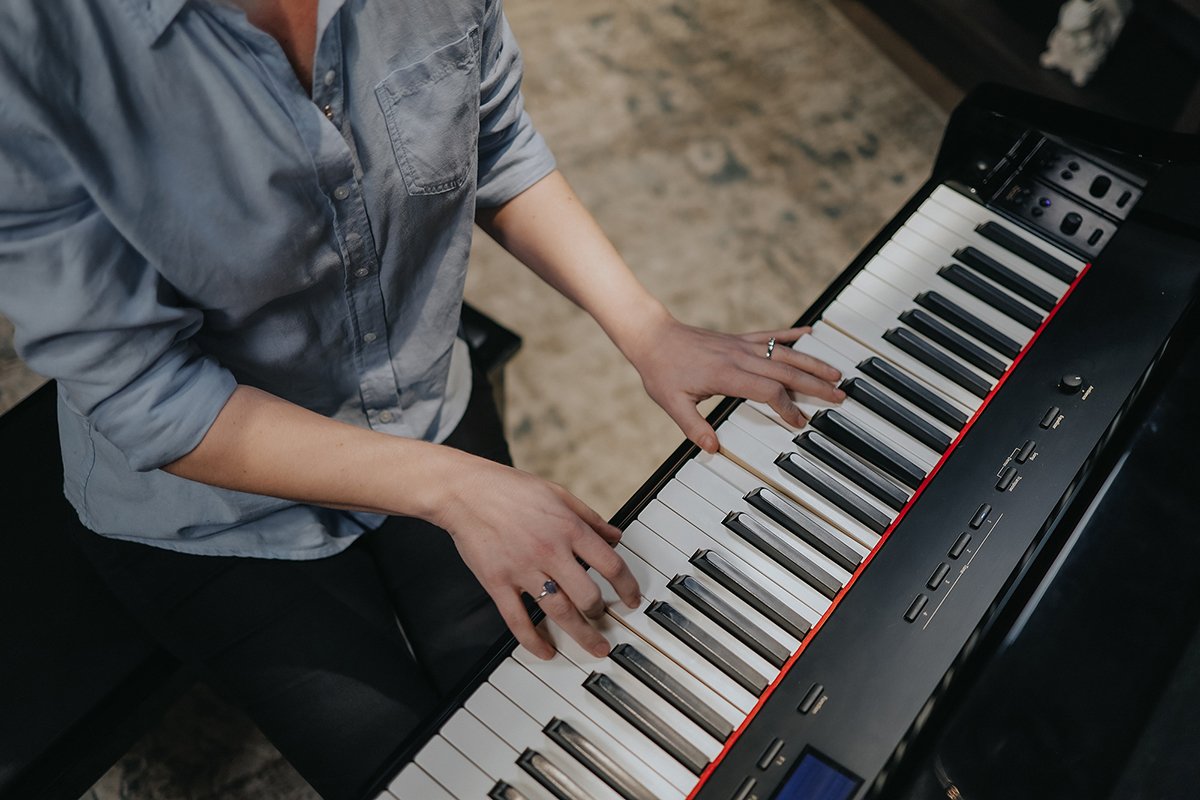
What Should I Learn First on the Piano?
Learning the piano, especially when one is still starting, can be fun! It can also be gratifying if one knows how to plan out the practice and reach goals for mastery of skills.
On top of that, many piano players claim that they reduce their anxieties and stress every time they play. Remember that playing and listening to music can be cathartic at times.
However, some beginner piano players might find it difficult to structure their practice times, not knowing what to prioritize first.
In this article, we give recommendations on what one should learn first on the piano, aligned with suggestions according to Robert Emery.
What to Learn First on the Piano
1. Familiarize yourself with the notes.
Each piano has a set of notes. Notes are symbols that represent the sound pitch of the piano.
A noticeable pattern on pianos is having two black notes followed by three black notes with white notes.
Learn the white keys first and know the cycle of eight notes, namely C, D, E, F, G, A, B, and C.
Below are some tips to guide you for faster memorization of note placement:
- You can locate C to the left of two black notes.
- You can identify E to the right of two black notes.
- You can identify B to the right of three black notes.
- You can locate F to the left of three black notes.
In fact, regarding this cycle, technically, what you need as a starting point to practice and learn is the C major scale—starting on a C note anywhere on your piano until the next C constitutes one octave.
Beginners also start at the middle C – the C found in the piano’s middle.
As you move forward with your learning, you will have gone through 12 major scales by the time you’re no longer a beginner.
2. Learn the correct finger position.
The next thing you need to learn is proper finger positioning on the piano. Positioning is crucial in furthering skills in piano playing.
Beginners start with an exercise called finger numbering when they get to decide which fingers to use vis-a-vis notes to play.
Note that this step in the learning process is vital for learning accuracy and the comfort of the pianist. The right fingers placed on the right keys provide better coverage for the whole scale.
Since beginners learn the C major scale first, use the thumb, index, and middle fingers respectively when playing the first three notes. The thumb should then glide under to play the fourth note, with the other remaining fingers to follow.

3. Ensure you have proper hand positioning.
Other than getting finger positioning right, proper hand positioning matters. Hand, forearm, and wrist damage may occur if you employ the wrong position.
A tip for beginners is that the wrist should feel and be loose. The hand should be level with the floor, with the wrist not dipped down.
Another way to have a comfortable hand position is to ensure that the bench or stool you will use is parallel to your piano’s center.
Just adjust the distance until you can comfortably reach all of the piano’s keys.
4. Proceed to play your first melodies.
Once you finish the first three steps detailed above, the next stage is to play the first melodies on your keys. Pick a song that uses the primary form of notation.
Part of learning to play your first melodies is the assumption that you have also gone through essential note reading, but if you have not, assigning notes to your keys and fingers will be just fine and will be more than enough for starting.
Other Tips on What to Prioritize For Piano Beginners
Another critical consideration for piano beginners, other than what to learn first and the learning method, is finding best music shop San Francisco to buy pianos.
You can choose to learn through traditional lessons, or in more recent times, app learning is available.
If you choose traditional lessons, you have to pick a teacher who will work well with you.
You will sit side-by-side at the piano, and your teacher will guide you through lessons and give you the feedback you need.
App learning is also available in case you prefer learning alone.
You can now access video tutorials online or get technology that provides responsive and adaptive feedback.
Yet another consideration for piano beginners is the choice of instrument. Weigh the pros and cons of getting an acoustic piano versus a digital keyboard, but either way, the steps detailed above will work just fine with either of the two.
The Bottom Line
With a motivated spirit, the right learning mindset, and the best tools at your disposal, we wish you the best as you begin your journey in piano playing.
Remember that even the experts have gone through the basics before delving into other intricacies and complexities of playing an instrument.




